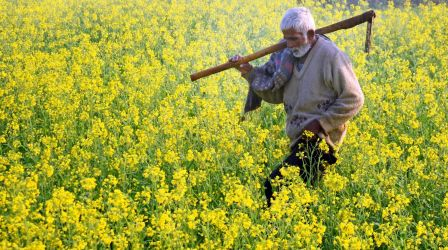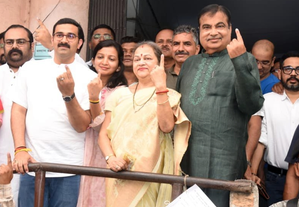New Delhi : Focus on the rural economy in the budget has been waning over the years and in such a scenario a revival of the rural economy would take time, JM Financial said in a report.
In the absence of a specific focus on the rural economy in the Union Budget for 2023-24, analysts don’t see immediate triggers for revival in the rural economy. Moreover in the absence of specific or enhancement of allocation towards the rural economy, we believe that the rural environment would have to revive on its own. Hence we would view businesses dealing with price sensitive low ticket items as less likely to benefit, JM Financial said.
An attempt is made to make the new tax regime more attractive after getting a low response in FY23, however we believe the benefits in the form of tax saving on enhanced no-tax limit (INR 0.2mn) is unlikely to spur demand in a meaningful manner, JM Financial said in a report.
Unlike the anticipation by a section of the market, rural focus was missing in the budget announcements. The expectations of a populist budget was linked to 9 state elections in 2023, moreover with FY24 being the last full year budget before the general elections in CY24. However, we believe that the schemes relating to empowerment of women Self Help Groups, artisans and setting up of digital infra for agriculture and farmer centric solutions would provide opportunities in the rural economy to improve their livelihood, JM Financial said.
Moreover, the budgetary allocation towards rural centric schemes like MGNREGA and PM Gram Sadak Yojana has been declining ever since FY22. Even the sentiments as collated by CMIE show a declining trend in the rural economy ever since June ’22 whereas the sentiments in the urban economy seem to be holding up well, JM Financial said.
In the absence of a specific focus on the rural economy, we don’t see immediate triggers for revival in the rural economy, the report said.
The latest rabi sowing has been progressing well even on a higher base of last year, except in the case of wheat.
Subsidy burden has been the major pain point in India’s fiscal, led by rising fertilizer and food prices. Fertilizer subsidy was increased by INR 1.1tn in FY23 over and above the budgeted figures of INR 1.05tn. Allocation towards fertilizer subsidy has been made to the extent of INR 1.75tn in FY24. We believe with easing inflationary pressures, the government could have limited the allocation to INR 1.4tn, as fertilizer prices have moderated by 40% from its peak. However, the geo-political situation is still in a flux and the government’s higher allocation seems prudent at this juncture. Food subsidy has been pegged at INR 1.97tn (vs INR 2.9tn FY23RE), as the outlay would be reduced with the discontinuance of the PM Garib Kalyan Yojana. On an overall level, subsidies form 1.2% of GDP vs 1.9% in FY23RE.
Past data indicates that the exuberance or otherwise relating to the budget day normalizes within a month in the equity markets. Moreover, a substantial positive performance in Nifty was witnessed in the week following the budget day only during FY16, FY20 and FY21.
The personal income tax changes in the Union Budget affect many but the impact is low, Credit Suisse said in a report.
The split of salary income by income groups shows that while the number of filings is mostly by low-income groups, the bulk of the taxes come from high income.
56% of the filers belong to the low-income group but they add to just 2% of the tax collected. People earning more than Rs 10mn are less than 1%, but they add to 10% of the tax collected, the report said.
Inflows from small savings deposits have shrunk considerably. Small saving deposits for government have been declining, and at the current pace, can be 20% YoY lower for FY23.
This may still be marginally better than budgeted, though these flows are generally larger nearer to the year-end.
While bank deposit rates have risen considerably, NSSF rates remained low for most of FY23, were raised in Jan-2023. The Centre continues to remain dependent on small savings flows to fund the deficit, Credit Suisse said.






Related Posts
realme extends NARZO lineup with NARZO 70x 5G: The better 45W charging phone under Rs 12K
Bajaj Auto’s net profit rises to Rs 2,011 crore in Q4, declares dividend of Rs 80 per share
Infosys posts 30 per cent jump in Q4 net profit, declares dividend of Rs 20 per share